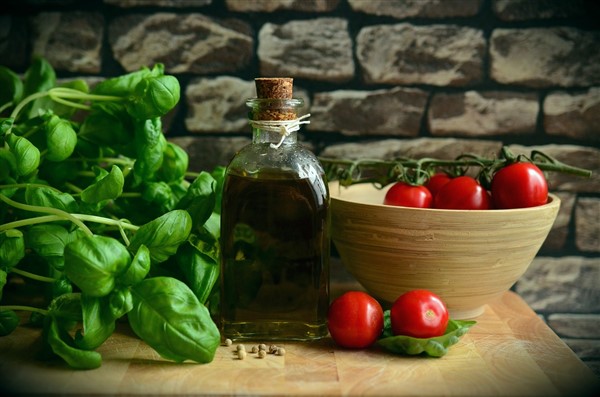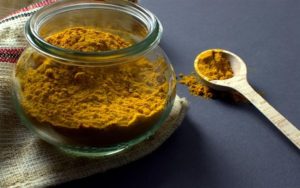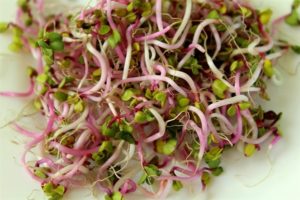Can you make cooking healthier without taking too many extra steps? The answer is Yes, you can! I have 4 small changes that you can incorporate into your cooking routine that will take the nutrition of your meals up by several notches. Here are some of my favorite kitchen hacks. Read on…
Kitchen Hack #1: Let Garlic Sit A Spell
If you plan to use garlic in your cooking, make it the first item that you’d chop and set it aside while you go about the rest of the food preparation. Why, you make ask. A 2001 study in the Journal of Nutrition showed that heating garlic in the microwave for 60 seconds or in the oven for 45 minutes seemed to affect garlic’s ability to protect against a carcinogen in rats; however, letting the garlic “stand” for 10 minutes before heating it up in the microwave seemed to help retain some of its anti-cancer effects. Another study, published in 2007 in the Journal of Agricultural and Food Chemistry, showed that heating uncrushed garlic for six minutes suppressed its ability to inhibit platelet aggregation.
Why? Because that triggers an enzyme reaction that boosts the healthy compounds called allicin in garlic. The benefits of allicin are however lost, if you don’t consume or cook with garlic right after the 10-15 minute sitting period. A small kitchen hack goes a long way to provide you better nutrition! So, remember to chop/mince the pods first (before cutting other veggies) and let them “sit” for 10 minutes.
Want to find some fantastic recipes that use garlic? Look no further than several recipes on Healthy Indian:
Kitchen Hack #2: Starch Is OK?
You’ve heard the hype about how starch is ‘bad’ for you. However, there’s one type of starch that can radically transform your gut biome for the better — it’s called resistant starch.
Resistant starch is a type of starch that’s “resistant” to digestion — your body can’t break it down. Usually, enzymes in your small intestine digest starches and turn them into sugar. Resistant starch, however, moves through the stomach and small intestine undigested, and arrives in the colon intact. At that point, good bacteria feeds on it, producing beneficial short-chain fatty acids.
Resistant starch carries many benefits: it strengthens the gut, burns fat, and protects against colon cancer, diabetes, and heart disease.
The best sources of resistant starch are green banana and plantain flours, cooked and cooled (yes, cooled when hot) rice, and raw potato starch.
Below are recipes that feature raw bananas. Check them out:
Next time you want to eat rice, cook it with a little bit of coconut oil (or ghee) and store it in the fridge before consuming. After that, you may want to try some of these recipes:
- Vegetable Multigrain Khichdi
- Egg Tomato Spicy Rice
- Brown Rice Vegetable Pulao
- Jeera Rice
- Bisi Bele Bath
Kitchen Hack #3: It Takes Two To Tango
We all know about the current turmeric craze and the health benefits it brings – mainly its anti-inflammatory properties. However, did you know that the human body has trouble assimilating the curcumin in turmeric because of its rapid metabolism in our liver and intestinal walls? Did you know that by adding a little bit of black pepper to wherever you are using turmeric, you can increase turmeric’s bioavailability by 2000%???! And did you know this combination has not shown any side or ill effects on humans and animals? So, the next time your recipe calls for turmeric, automatically remember to add a bit of freshly ground black pepper.
For some delectable dishes that contain this yellow gold, check out:
- Baingan Bharta (Roasted Eggplant Curry)
- Chana Masala
- Sambar
- Raw Mango Fenugreek Salsa
- Rainbow Chard Red Lentil Stew
Kitchen Hack #4: Let ’em Sprout
Sprouting is a great way to unlock the benefits of grains, nuts, beans and seeds. Did You Know that Sprouted Grains/Legumes are more nutritious than regular whole grains/legumes?
Health benefits from sprouts is from the result of catching the sprouts during the germinating process. This germinating process breaks down some of the starch, which makes the percentage of nutrients higher. It also breaks down phytate, a form of phytic acid that normally decreases absorption of vitamins and minerals in the body.
So, sprouted grains have more available nutrients than mature grains. Those nutrients include folate, iron, vitamin C, zinc, magnesium, and protein.
Sprouted grains also may have less starch and be easier to digest than regular grains. It may help people who are sensitive to digesting grains.
It is very easy to sprout legumes at home. Wash them, soak them overnight in water. Drain. Place them in a sprouting jar and put them in your pantry. Wait for a day, rinse them, drain and place the jar back in the pantry.
Depending on the type of grain/legume, and the temperature and humidity in your home, they will sprout anywhere between 24-48 hours.
Put them in the fridge and use within 4-5 days to make a Spicy-Tangy Carrot Sprouts Salad, or a Zesty Carrot Garbanzo Usli or use them in a Stir Fry Sprouts And Vegetables recipe.
Which of these kitchen hacks are you willing to give a shot? I hope you say “all 4 kitchen hacks!!”. 🙂
Three cheers to good health!
Do you love our posts and recipes? We’d LOVE to see your creations so click a photo and tag us on Instagram with the hashtag #healthyindian3 and please give a star (★) rating below. Follow us on Facebook, Twitter, Pinterest, Instagram, YouTube & Tumblr for healthy, easy and delicious recipes and lifestyle tips.
*There could be affiliate links in this blog. As an Amazon Associate, we earn from qualifying purchases.







Thoroughly enjoyed reading this post. Very useful information and so easy to follow
Glad you enjoyed Nithya. I hope to bring more such tidbits to our Healthy Indian readers in the future. Thanks for commenting.